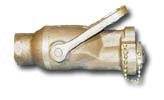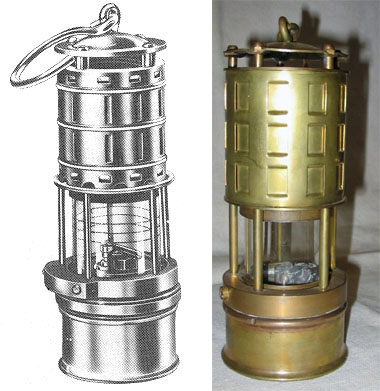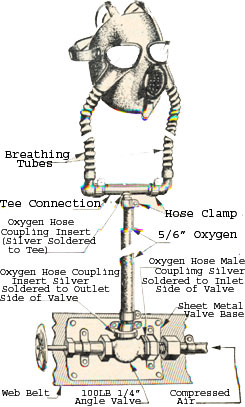| There were many situations onboard ship that were
not considered an emergency but required breathing
protection (e.g., spray painting, entering a void or
tank, work on or around the CHT system). In a
non-casualty situation, the damage control assistant,
gas free engineer or his designated assistant had to
carefully evaluate all potential exposure to fumes,
gases or toxic hazards. The hose air-line mask was
developed in the 1940s for such situations. It could
also be used for diving in a tank or over the side under
controlled conditions (36-foot depth or less). It was
not used in firefighting. The first hose air-line mask
assemblies were developed in 1943. They were fabricated
using modified ND Mark III and ND Mark IV gas mask face
pieces. They had a dual air hose connected to an air
intake “T” attachment, supplied by a 5/16-inch inside
diameter by 50-foot rubber air hose that connected to a
compressed air bottle fitting. The compressor air bottle
contained 200 cubic feet of air. Fully charged, it
lasted the wearer 1 ½ to 2 ½ hours. A portable air hand
pump with an intervening air reservoir also was used. If
a hose was used to run out to fresh air, it could be no
longer than 25 feet with an inside diameter of 1 inch.
The assembly had a cotton harness, a safety belt and a
50-foot by 5/16-inch steel tending line with snap latch
hooks that attached to the “D” ring on the center of the
harness assembly. In 1951, development of the new hose
air-line mask was one of many measures undertaken for
personnel protection while Sailors were performing
various tasks onboard U.S. Navy ships. It was developed
to be used as a protective device worn by personnel
entering unsuitable atmospheres during routine work or
rescue, and later for shallow water (to 36 feet) diving
operations. By 1959, the U.S. Navy authorized the use of
a new hose air-line mask for shipboard equipment and
inclusion in the hull and repair locker allowance. This
new assembly had a redesigned, monocular face piece and
intervening pressure regulator. Onboard ships,
low-pressure air systems had air-line manifolds
installed for two or four hose air-line mask
connections; two stage regulators and air filters were
also installed, to reduce the pressure and remove
impurities from the air. One man could breathe
sufficiently through up to 250 feet of air hose. Long
runs of air hose had to be watched closely by tending
personnel to ensure that the line did not foul and that
the hose was kept off of hot decks. The new hose
air-line mask had a belt-mounted constant flow
respirator with a speaking diaphragm, full vision
plastic lens with adjustable head harness, breathing
tube, and a special body harness with a “D” ring on back
to attach the safety line. The constant flow regulator
created a slight positive pressure inside the mask. This
positive pressure ensured that no harmful air could leak
in and provided breathing air and eye protection in
spaces contaminated by any type of gas or vapor, and in
a space where there was a lack of oxygen. |




